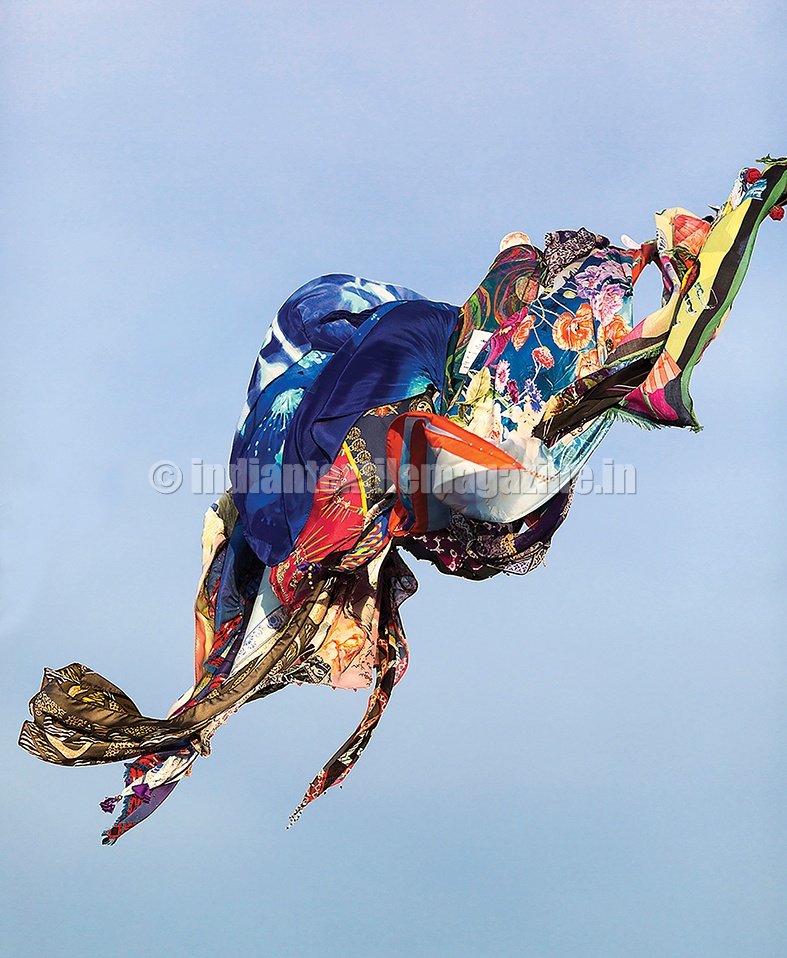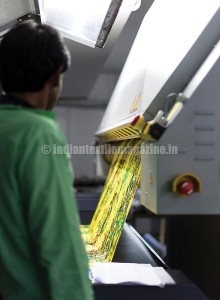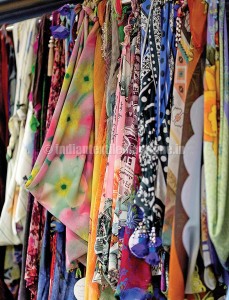Apsara Silks, an established silk mill manufacturing and export house run by Mr. Vishnu Hari Goenka and his son, Mr. Anand Goenka, is now gearing up for new innings. Having consolidated its position in the digital printing segment as a B2B player, the Bangalore-based company is now positioning itself as a B2C company to reach out to a diverse section of individuals across the globe.
Silk Route: B2B to B2C
Mr. Anand Goenka has chalked out a strategy which is more or less based on the company’s motto ‘You Art the Print, we Print the Art.’
“You give us a design, and we will print it on the desired fabric, style it as a sari or dress, stitch it as per specifications and ship it to your destination, regardless of where you are,” said Mr. Goenka, throwing light on his forthcoming business funda which will unfold sometime around September next.
In simple terms this is how it will work. Individuals (both men and women) can upload their design on to a webpage, after which an in-house design studio gives shape and form to the design. Finally, Apsara Silks will deliver the end-product. The concept will be marketed through social media and other Internet tools.
“Today, digital printing is a booming business. Every week a new machine arrives in India,” Mr. Goenka revealed. Given the fact that almost everyone wants a slice of the digital printing pie, Apsara Silks is padding up for new launches to stay ahead of the curve. This initiative is expected to increase the brand’s presence in the domestic market which accounts for 15 per cent of the annual revenue.
An early entrant
Apsara Silks is among the first silk mill manufacturers to venture into digital printing and treat it as an industry and not an add-on to their portfolio. Till then, the challenges associated with rotary printing prevented most people from integrating it into their system. “Rotary printing is usually inaccessible to small buyers because you need screen charges. So the solution lies in using digital printing,” said Mr. Goenka, who holds an MS in finance from Bentley University, Massachusetts.
Back on the home turf in 2006, Mr. Goenka could have comfortably joined his father who till then supplied fabrics to local manufacturers. Instead, the exposure abroad gave him the confidence to give up his comfort zone and chalk out a career in the export market through textile digital printing, which was relatively unknown at that time. Ironically, around 2005-2006, Indian textile mills saw a downslide and became loss-making sick companies. Yet Mr. Goenka had the foresight to recognize digital printing as a complete industry by itself.
Having realized that, he decided to specialize in digital printing and forayed into the business by procuring a printing machine from Netherlands for Rs. 1 crore. It goes without saying that the ‘bold move’ brought along a fair share of teething problems. It took him nearly six months to understand the technicalities of it. “I approached textile consultants and most of them didn’t have the operational know-how of it. Even as I was grappling with this, other problems surfaced,” he remembered.
It turned out that digital printing had a pre- and post-printing process to it. Notwithstanding that, as Mr. Goenka began by printing on silk, it required an understanding of acid dye printing. He somehow figured it out through a trial-and-error method and though it was a difficult phase, eventually it became a rewarding one. From printing 150 m/day the company scaled up its operations to currently print 10,000 m/day, complete with pre- and post-production process. Once he got his infrastructure in place, he entered the export market and gradually strengthened his position with a presence in 44 countries spread across five continents.
While Mr. Goenka continues to explore newer markets, all the printing happens in a suburb in south Bangalore where Apsara Silks is located. Spread across three floors, Apsara Silks looks like any other building from outside. It certainly doesn’t resemble a warehouse, but when you are inside, you get the feeling of being in a mill. Thaans of printed cloth sport the motto and are hung as a backdrop at the entrance of each floor. At any time, the mill will churn out thaans of printed cloth through hi-tech automated machines. The process is so mechanized that human interface is minimal.
Over time, Apsara Silks has evolved into a self-sustained vertically integrated mill, with water treatment facilities, power generators and almost everything required to process on all fabrics. The beginning was with silk and extended to other fashion fabrics like cotton and polyester, among others. Being soft, initially silk was not easy to work on, but Mr. Goenka leant to handle the fabric with its peculiarities. In fact a complete understanding of the fabric enabled him to extend his expertise to curtain fabrics as well. Clients choose a fabric and receive a ready-to-drape stitched curtain, whereby the fabric is treated to be flame-retardant.
Value-adds
This silk mill differentiates itself from other players in the digital printing segment by offering complete finishing infrastructure for all kinds of fabrics. A case in point is the scarves section, where scarves are embellished with accessories like tassels and beads. These lightweight scarves also sport interesting finishes like the ‘rolled hem’ finish.
From time to time Apsara Silks enhanced the printing process with new additions, like the hand and machine embroidery section which came up in 2013.
It didn’t take long for Apsara Silks to include a sewing section. As of now, smart casuals and western outfits for women are tailored to individual requirements. By September next, the company will extend its expertise to the men’s range of shirts and accessories like scarves.
In 2014, Mr. Goenka decided to hone his skills with a beam dyeing machine, which, according to him, is essential to highlight colour tones. A lay person can understand it in terms of colour clarity, though Mr. Goenka prefers to describe it differently. “The optical illusion of colour is better,” he explained.
Right now the R&D team is working on various hand feels and drape of the fabric. All this research translates into new launches. This year, the company has already launched a print and embroidery collection. “We are not a commissioned printer. Everything is based on my design portfolio. Customers choose from my designs and we deliver the end product. However, now we have the wherewithal to execute any design that a client wants. This is going to be our second launch this year through which we will tap B2C customers,” he concluded.


